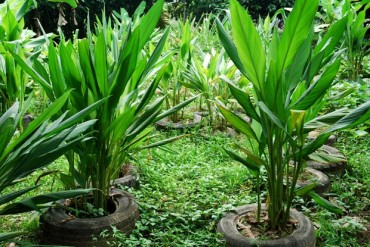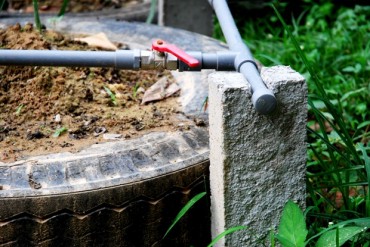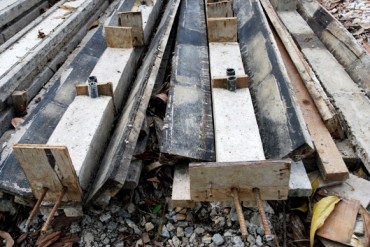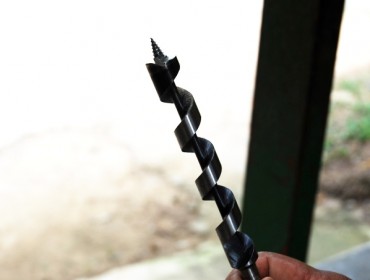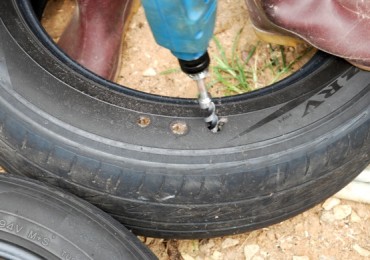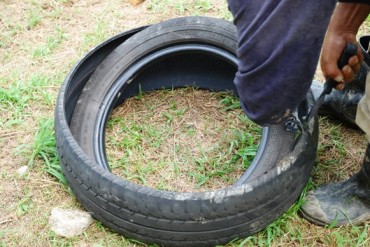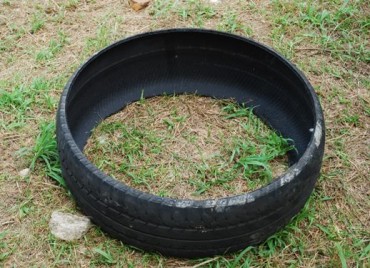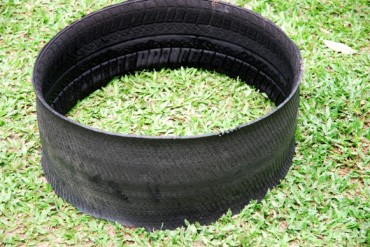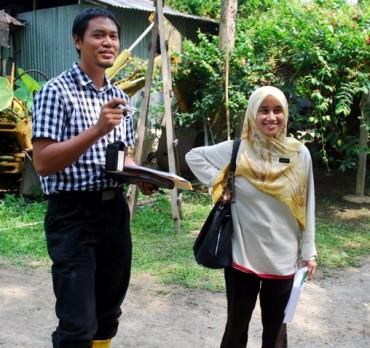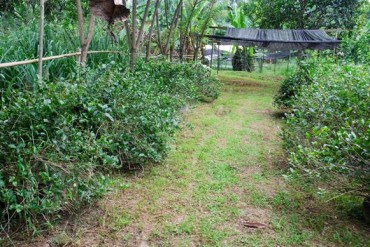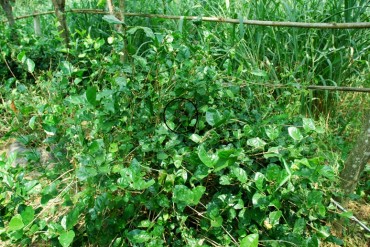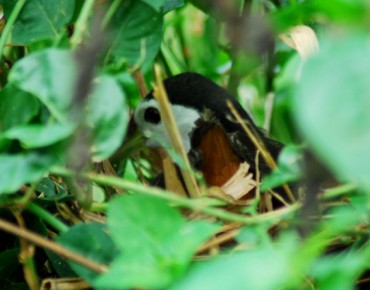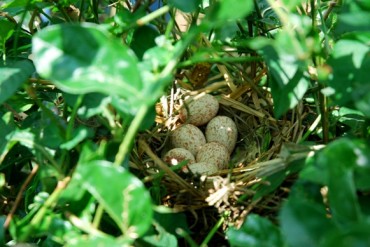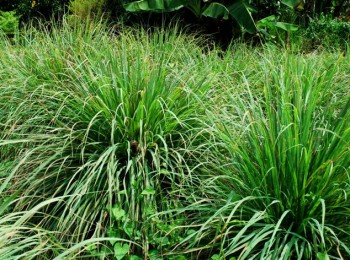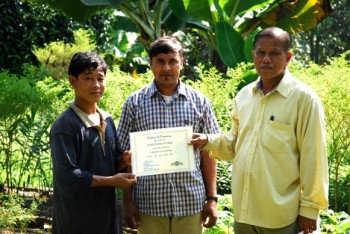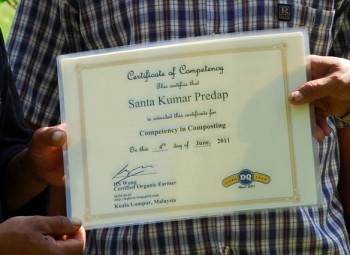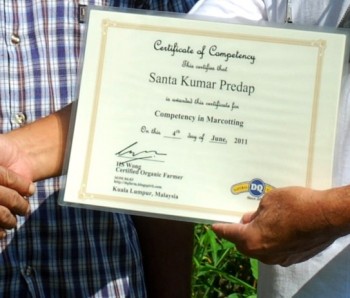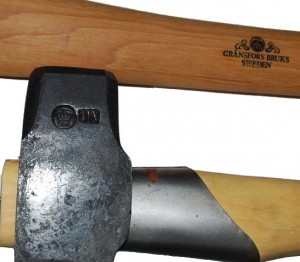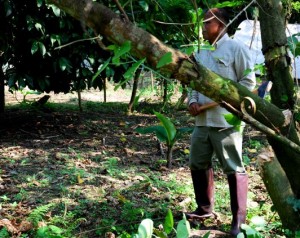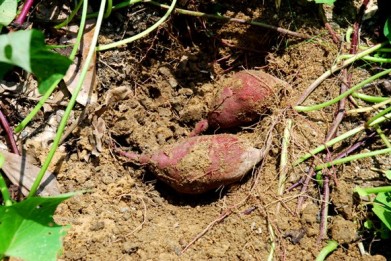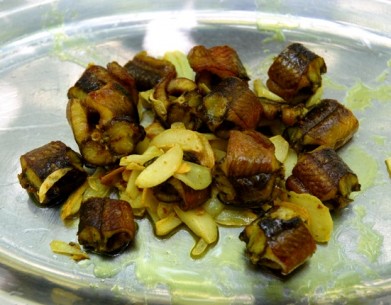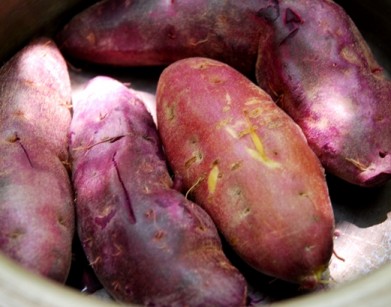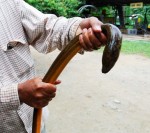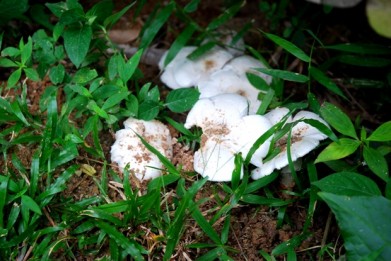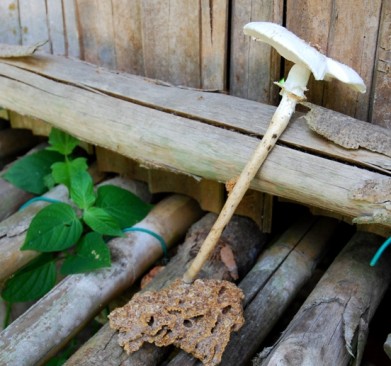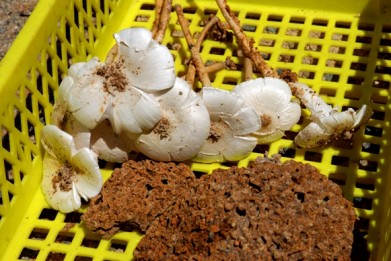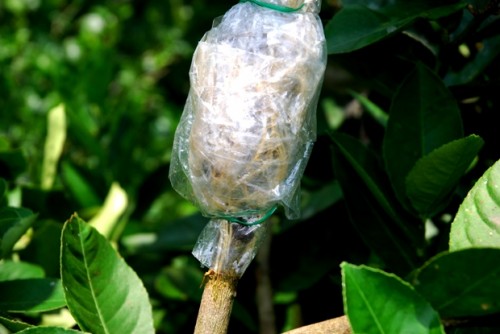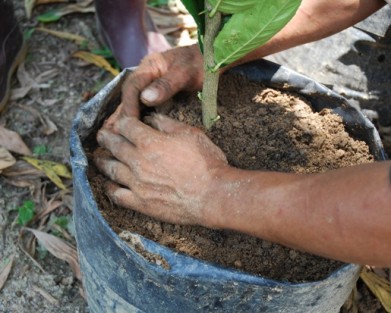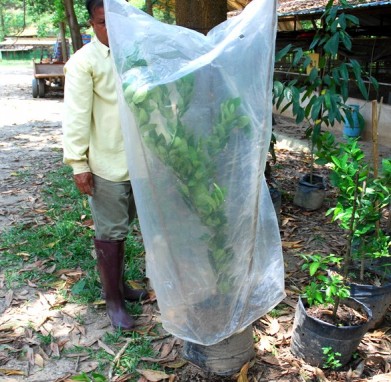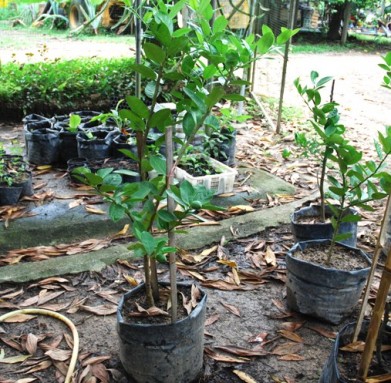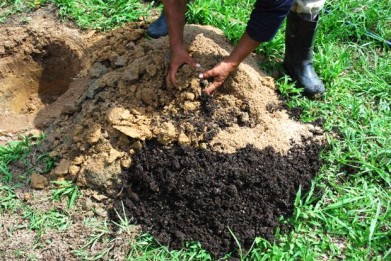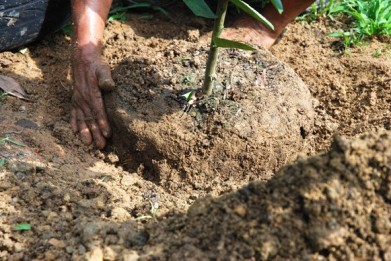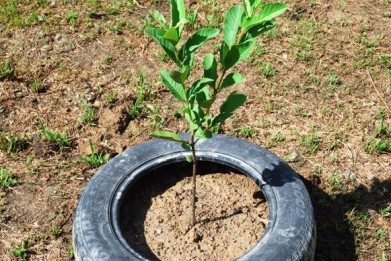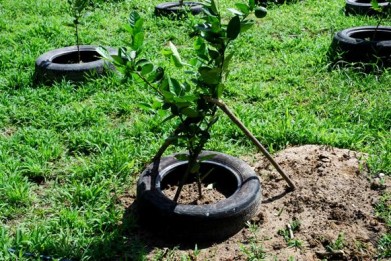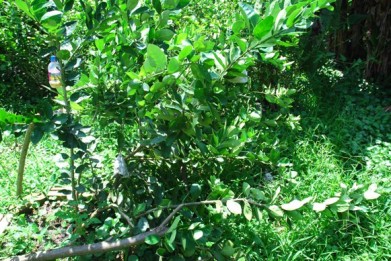Jul 05, 2011
Tire Gardening
We are becoming quite an expert in tire gardening.
An old tire garden on soggy clayey soil producing sweet potatoes, and various herbs.
Tire gardens can be used on patches of land that otherwise will not be productive. Tire gardens tend to require less work for weeding and are suited for perennials. The initial hard work mixing the soil and then filling up the tires will pay off in the long run because you need invest less 'running costs' such as weeding, less leaching of nutrients and being a raised bed, less fungal and nematodes problems .
A new ginger garden coming up on a patch of land that has a lot of construction debris.
A serai / ginger / sweet potato garden in a corner with hard soil.
Proper piping reduces the time taken to water the plants. The pipes are raised on self-made concrete legs. We prefer PVC to poly pipes as we do not cement the sections of the pipes so we can dismantle and adjust or remove as needed.
Neat, sturdy, DIY.
It's easy to make the concrete legs:
Knock some used discarded construction plywood together to form moulds.
Newly stripped from the mould
The rebar sticks into the soil to prevent toppling.
Tires need drainage holes otherwise the roots will rot:
Use a half inch or larger, auger
Drill multiple holes on three sides of the tire
Make sure the holes are clean, otherwise the holes will close with moist soil.
PS
For home gardening, if you want a more aesthetic look, you can do as follows:
Remove the rim using a sharp knife
The tire after the top and bottom rims are removed. You can use it as it is (no necessity for drainage holes), or you may want to reverse it:
We intend to create potato stacks with these; maybe three tires high; the drainage would be better than uncut tires.
19:58 Posted in Blog, Sustainable Farming | Permalink | Comments (0) | Tags: tire gardening, making concrete posts, making drainage holes in tires, uses for old tires
Jun 28, 2011
Organic Certification Auditors Came
Puan Norazlina, Head of the Agricultural Department, Bentong and Mohd Noor Azlan, Malaysian Organic Scheme auditor, together with their support staff, conducted a compliance audit of the farm today.
16:12 Posted in Blog, Visitors | Permalink | Comments (0) | Tags: sijil organik malaysia, som, organic certification malaysia
Jun 26, 2011
They lose all sense of fear....II
You certainly would not expect to find a waterhen nesting right next to a path that's used daily:
Much less, above ground, in a bush. We have always found them on the ground, next to water:
The black circle marks the spot where she's peering at us. Click on pic for larger view
Close up of the wary mother:
Click on pic for larger view
Clutch of six eggs
This can only happen when the mother feels more comfortable nesting near humans than in her natural environment which unfortunately, lately, has more monitor lizards and snakes than usual because of the growing eel population. We are studying how to rebalance the micro-ecology there.
17:13 Posted in Blog | Permalink | Comments (0) | Tags: white crested waterhen, amaurornis phoenicurus, rails, crake
Jun 21, 2011
They lose all sense of fear....
If we truly mean them no harm, they lose all sense of fear....
They will nest anywhere, here, in a serai (lemongrass) bed
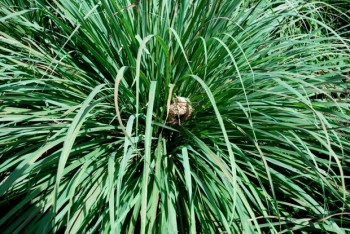
Close up of the nest in a serai (lemongrass) clump.

Three red eggs hatching out. The color of the new hatchlings the same red as the eggs. We have yet to id the bird.
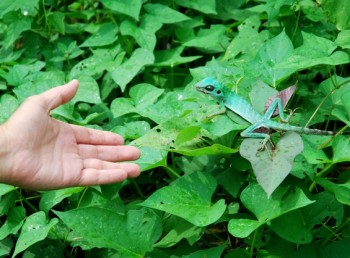
A crested lizard with a more turquoise coloring than the normal green. It's more curious than fearful of our hand. Occasionally they will just land on your head or shoulder as you walk under a tree. The farm is a sanctuary of sorts for them and other lizards.
PS found this old pic demonstrating what we mean:
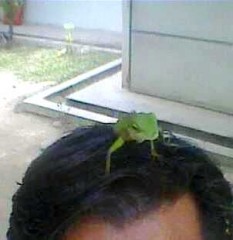
Curious visitor from the tree under which we were having lunch
14:30 Posted in Blog | Permalink | Comments (0) | Tags: wild birds, taming wild birds, green crested lizard
Jun 05, 2011
Spreading the word....
Our workers come from distant villages in the Himalayas. They come of course to earn much needed hard cash. But more than that we make sure they return home with new knowledge and skills to increase productivity without resorting to chemicals. When they achieve competency in a specific area, they get a certificate. Our farm have a long list of Nepalese who want to work for us.
Here's Santa Kumar receiving his competency certificates from Pak Cik Razaly the farm manager. Looking on is the farm supervisor, Dilli Prasad.
Santa received his certificates in composting and in marcotting.
He showed that he could independently produce compost on a schedule so that supply is never cut off. He could ensure that temperatures are reached so that pathogens are destroyed. He always gets the carbon: nitrogen ratio right.
Certificate in composting
He does marcotting of fruit trees independently with no supervision and has close to 100% success.
Certificate in Marcotting
We award certificates for competency in a wide range of farm work – from taking care of specific crops, for example, sweet potatoes, spinach, etc., to making high quality cement posts, to poultry necropsy and disease identification.
When they return to Nepal, they can either be better farmers, or they can use the certificates to train others or to earn better wages from their next employer.
08:56 Posted in Blog, Permaculture | Permalink | Comments (2) | Tags: training, certificate in organic farming, dq farm, knowledge based farming
May 27, 2011
A Good Axe is also Permaculture?
A quality durable axe, quaranteed for 20 years will mean "we take less, that we need to produce less, destroy less". That's permaculture! That's the antithesis to modern unsustainable consumer driven economy (think branded running shoes that lasts only a few months).
We received these axes which are quaranteed for 20 years, recently
These are from Gransfors Bruks, Sweden. The quote above is from their Axe Book. Permaculture in Manufacturing - PermaFacture perhaps!
We got a splitting maul, a splitting wedge, and a felling axe.
The axe-smith who made our axes is UN or Ulrik Nilsson. Here's his picture from the Axe Book:
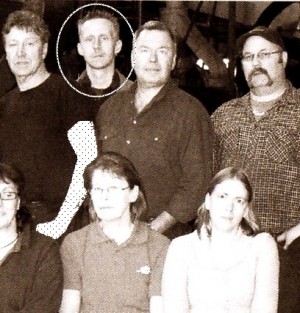
We took the axes for a test recently. The Nepalese who are regular axe users say they are the best axes they have ever used in terms of balance, conservation of energy, etc.
Pak Cik Razaly had an interesting question: why can't we make such axes? Why indeed.
Dilli, our Nepalese supervisor, trying out the maul.
Pak Cik Razaly felling this 8 inch trunk without breaking a sweat. Have you tried a China-made axe?
Thanks to Lrong Lim in Takamatsu, Japan for writing about his Gransfors Bruks axe in his blog: http://lronglim.blogspot.com/
This is Gransfors Bruks' website: http://www.gransfors.com. Email is yxboken@gransfors.com.
P.S. The axes took 5 days to arrive in KLIA from Sweden (after waiting a couple of months for them to be forged). They took 9 days to travel from KLIA to our office in KL, a distance of 50 km.
16:35 Posted in Blog, Permaculture | Permalink | Comments (4) | Tags: grunsfors axes, lrong lim, american felling axe, splitting maul
Apr 25, 2011
Lunch At the Farm
The sweet potatoes are ready for harvest just 70 days after planting. That's fast, and they achieved a good size too.
We decided to have a quick lunch - plain steamed sweet potatoes, and a wild eel that was wriggling across our path as we were inspecting the sweet potatoes.
Wild eel rubbed in some kunyit (turmeric), stir-fried in grassfed chicken fat with garlic. Those of you who know good food can imagine just how delicious this dish is!
Purple and yellow sweet potatoes for their antioxidant (anthocyanin), their high fibre, and their ability to keep blood sugar levels stable ( they are a source of natural 'caiapo', a supplement for the diabetic to control blood sugar ).
To add an exotic gourmet touch to the plain steamed potato, make a dry topping of grated coconut, sugar and salt to taste. Sprinkle over bite-size sweet potato, or spoon on top of each chunky slice.
Postscript: This huge guy crossed our path a few days later. Our experiment to create a sustainable mini-scale natural fishery by slowing down sections of the stream, feeding, etc seems to be producing result.
Click on pic for close - up
12:13 Posted in Blog | Permalink | Comments (8) | Tags: eel, wild eel, sweet potato, purple sweet potato, anthocyanin, caiapo, diabetic food, diabetic superfood, slow food
Apr 13, 2011
Symbiotic Relationships - Ant-Hill Mushrooms
Now here's a sight for sore eyes, cendawan busut or ant-hill mushroom, termitomyces albuminosa.
The mushroom grows to the surface from the termite nest (above photo), which can be a foot (30cm) up. The entire stalk is edible and delicious.
It is one of the most delicious mushrooms, and leave ALL cultivated mushrooms miles behind in terms of taste and texture.
Unfortunately it is still not possible to cultivate this mushroom commercially. It is symbiotic with a certain termite, odontotermes spp.
The termites cultivate the mushroom by breaking down wooden material that the mushroom needs to grown on. There is speculation that the mushroom needs the dung of the termites too to grow. The termites in turn use the material decomposted by the mushroom as food.
This is called, Living Together.
11:07 Posted in Blog | Permalink | Comments (3) | Tags: cendawan busut, termitomyces albuminosa, odontotermes spp, symbiotic relationships
Apr 11, 2011
Oddity In The Forest
Came across this oddity hanging down from a vine in the forest.
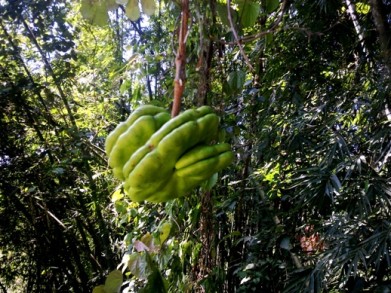
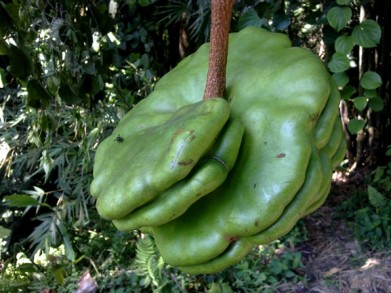
A foot across and about 6 to 8 inches thick
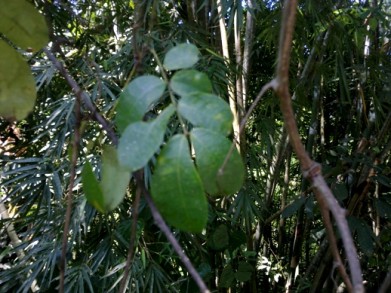
It's leaves. Sorry about the focussing, it was quite windy.
18:22 Posted in Blog | Permalink | Comments (2) | Tags: unusual plants, rainforest, rare plants
Apr 08, 2011
Marcotting II
We generally have good root formation in around 30 to 45 days for lemon trees and other limau-type trees.
Saw off, and dap some iodine on the cut
Wrap vermicast around the root ball
Plant in a polybag with a light, friable and loose soil mix. We like to add some sand and vermicast to our farm soil. Loose, light soil will encourage the roots to grow deeper.
Cover the plant with a plastic bag to prevent drying out. Remove when new leaves and branch shoots are noticeable. Once the new leaves and shoots are established, plant to soil.
The area where we are planting these citruses have heavy laterite soil. We generally dig a hole and then mix the laterite with sand and compost.
We mix the laterite with sand and vermicast or compost
Place the plant half inside the hole
A planted marcotted guava
We generally place an used tire over the spot and top up the soil mix as need be. The tire reduces weeds, and prevent leachate of compost and vermicast.
Support the young tree. Marcotted trees tend to be shallow rooted and care must be taken during windy monsoon seasons.
5 year old marcotted lemon tree falling over after a night of heavy rain and strong winds. Marcotted trees have no tap root so should be supported even when matured in windy zones.
12:37 Posted in Blog | Permalink | Comments (0) | Tags: marcotting, air layering, lemon, organic farming, permaculture








